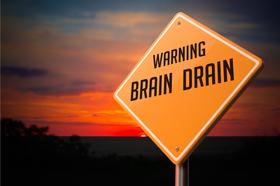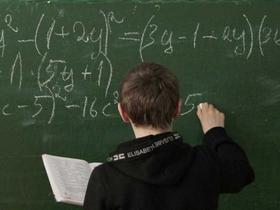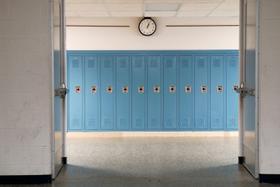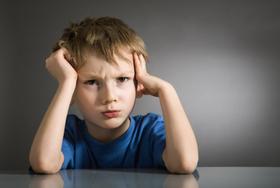Dropping out of high school is a decision that over 1 million American students make each year. Though it is a personal decision, it has a far-reaching impact not only on the student but on other students and the American education system.
Students who drop out of high school are more likely to live a life of periodic unemployment and have a higher rate of using government assistance. They tend to cycle in and out of the prison system more often than students who obtain a high school diploma, and their annual income is lower. But how does a student’s decision to drop out of high school affect others? And what impacts the rate at which students drop out of school?
In this article, we’ll explore the subject of high school graduation rates including the factors that influence them and their impact on schools and the American education system.
This video explains the effect of high school graduation rates on the American economy.
Why Do Students Drop Out of High School?
Roughly 7,000 students in the United States drop out of high school every day. For some time, the United States had some of the highest graduation rates of any developing country, but we have fallen to a ranking of 22 out of 27 countries.
High school is known for being one of the more unpleasant periods of a person’s life, but what causes a student to actually drop out?
Students cite many different reasons for dropping out of school, but over 27% say it is because they are failing too many classes. Over 25% say that boredom is a contributing factor and about 26% also say that they left school to become a caregiver for a family member. Another 20% simply said that school wasn’t relevant to their lives.
Other common reasons students drop out of school include:
- Getting held back a grade
- Needing to work to support the family
- Using drugs
- Becoming pregnant
- Joining a gang
- Missed too many days
- Couldn’t keep up
Surprisingly, a small percentage of students who drop out of high school cite the school environment itself as a contributing cause. Ineffective teachers, mental health issues, residential instability, and getting kicked out of school are some of the least common causes cited. Research reveals, however, that socioeconomic status is a key indicator of a student’s risk of dropping out.
Students from low-income areas are more than twice as likely to drop out of school as students who live in middle-income neighborhoods. Worrying about necessities like food, shelter, and safety prevents many low-income students from being able to focus on (or even attend) school.
This video offers another take on the impact of graduation rates on the economy.
High School Graduation Rates Across the Country
The American education system is by no means perfect. Differences in funding, state legislation, and testing requirements make it difficult for already struggling schools to pull ahead. Approximately 2,000 high schools across the country graduate less than 60% of their students – they’ve been nicknamed “dropout factories.” Together, these schools account for 50% of student dropouts around the country.
The national high school graduation rate is 84.6%. Average state graduation rates range from 72% to 94%, according to U.S. News Best High Schools rankings. Though there are significant differences among states, the national graduation rate is on the rise – up 0.5% over data from the previous year.
Though the national graduation rate is on the rise, there are glaring disparities among certain student populations. Graduation rates for Asian and Pacific Islander students as well as white students continue to exceed the graduation rates of black, Hispanic, Native American, and Alaska Native students. Similarly, graduation rates among economically disadvantaged students and students with disabilities are up while the rate for students with limited English speaking skills fell 0.4% over last year’s rate.
Graduation rates vary greatly by state. Here is a summary of high school graduation rates for 2017 graduates according to the National Center for Education Statistics:
- New Mexico and Arizona have the lowest graduation rate at 72%
- Kentucky, Iowa, and Nebraska are tied for the highest graduation rate at 94%
- Texas had the highest number of schools with 100% graduation rates
- Only 7 states had no high schools that graduated 100% of students for 2017
Now that you have a better idea of what graduation rates look like across the country, let’s take a closer look at the impact those rates have on current students, graduates, and the American public education system as a whole.
The Impact of High School Graduation Rates
Graduating from high school has a major impact on a student’s life, even if it doesn’t seem like it at the time. Having a high school diploma has become essential for financial success with data from the Bureau of Labor Statistics reporting that high school graduates earn over $670 more per week than dropouts. Over the course of the year, that adds up to nearly $10k.
Here are some of the other effects dropping out of high school can have on a student:
- High school dropouts are almost three times as likely to be unemployed than college graduates
- It is estimated that 65% of all jobs in 2020 will require some form of education after high school
- High school dropouts account for 67% of inmates in state prisons and 56% of federal prisons
- Among women aged 16 to 24, high school dropouts are the most likely to be single mothers
- High school dropouts use government assistance at a higher rate than graduates
These facts make it obvious that dropping out of high school has life-long consequences, but what is the impact on other students and the rest of the country? Outside the field of education, the college graduation rate has an impact on everything from crime to health care.
Here are some staggering statistics on the national effects of high school dropout rates:
- An increase of just 5% in male graduation rates could result in an $18.5 billion reduction in annual crime costs
- The same 5% increase could result in a decrease in incidences of assault by 60,000 and larceny by over 37,000
- The national spending average to educate a student is just over $12,600 while the cost to house an inmate is over $28,000
- Cutting the national dropout rate would save the country over $7.3 billion in annual Medicaid spending
- Increasing the national high school graduation rate to 90% would create over 65,000 new jobs, boosting the economy by as much as $10.9 billion
These statistics point to the fact that high school graduation rates have a national impact. Without systemwide reform, the economic future of the entire nation could be at risk. The students who drop out of high school today become the struggling workers of tomorrow, those who flit from low-paying jobs to low-paying jobs, constantly struggling to support their families.
At the state level, high rates of high school dropout might make it difficult for cities and states to attract new businesses while increased spending on social programs and criminal justice drain funds. The more the national economy struggles, the lower the country’s ability to compete in the global economy becomes. It falls on the shoulders of today’s high school students to help the country maintain its competitive advantage in the global economy today and in the future.
What Factors Influence High School Graduation Rates?
The benefits of increasing high school graduation rates across the country are obvious, but how do we get there? What factors influence high school graduation rates, and how do we manipulate them?
The top five factors influencing high school graduation rates are:
- Economic factors
- Demographic factors
- The ninth-grade factor
- Attendance and student engagement
- Course failure
Let’s take a closer look at each of these five factors.
1. Economic Factors
Socioeconomic factors are some of the strongest predictors of whether a student might drop out of high school. These factors include things like family income, family structure, and family stress as well as additional things like the mother’s age and marital status. Students from low-income families who are the children of young, single, unemployed mothers are more likely to drop out of high school than students from middle-income families with a more traditional family structure.
A student’s socioeconomic status influences multiple factors that, when combined, create a higher risk for dropout. For example, low-income students tend to have lower academic achievement scores and more absences, they may also be more likely to have an individualized education plan (IEP). Unfortunately, low-income students who drop out of high school have a high likelihood of continuing the poverty cycle which can affect the student’s own children in the future.
2. Demographic Factors
The area in which a student lives and his or her family’s economic status are major determining factors for academic success. These factors influence the type of school a student has access to as well as the quality of the teachers and the instruction. Low-income areas struggle to hire and keep more qualified teachers and resources for students are more limited. These things contribute to lower test scores which may then lead to further cuts in funding, making the problem worse. In an area where education is not properly funded or executed, some students never learn to value academic success.
Another demographic that is linked to high school graduation rates is gender. In many states, males have a higher dropout rate than females. In terms of race/ethnicity, the highest dropout rate is found among American Indian students, followed by Pacific Islander, Hispanic, and black students. Students of Asian descent have the lowest dropout rates and white students follow close behind. Other student groups with high dropout rates include students with limited English, homeless students, students in foster care, and special education students.
3. The Ninth Grade Factor
High school lasts for four years (for most students) and the first year is extremely important in influencing the trajectory of the student’s experience. Data analysis shows that about 1/3 of the country’s recent high school dropouts were never promoted beyond ninth grade. It stands to reason, then, that a significant part of increasing high school graduation rates should be focused on identifying students having trouble in ninth grade as well as their reasons for the difficulty. Making changes to address those challenges can benefit individual students as well as others like them.
To understand why the ninth-grade factor is so influential in student dropout rates, we must consider what other factors are coming into play at this time. During a student’s ninth-grade year, students experience increased peer influence with reduced parental supervision. In most cases, ninth grade also signals a change of schools and a breaking of bonds with teachers and peers. The organization of high school classes themselves may also pose a challenge for some students. It may also be that some students simply aren’t prepared for high school.
4. Attendance and Student Engagement
The number of absences a student has in high school – especially during their ninth-grade year – is an indicating factor of whether they will graduate. Early in high school, attendance is easy to monitor, and attendance during even the first few weeks of the ninth-grade year is significant. Research suggests that missing more than 10% of instructional time should be cause for concern because it translates to roughly 10 days (or two weeks) of absences per semester.
Attendance affects several aspects of a student’s academic experience, most importantly student engagement. The ninth-grade factor is a contributor to attendance and student engagement in high school but, for most students who struggle with attendance in high school, it is an issue that began in middle school and has gotten worse. Some research suggests that high absence rates in secondary education can be traced to low motivation. Out-of-school programs (such as summer programs and after-school programs) show mixed results for positively influencing attendance.
5. Course Failure
Grades are certainly not the only thing that matter about a high school student’s experience, but they are a key indicator of a student’s risk for dropout. On average, students earning a 2.0 GPA or lower during their freshman year exhibit much lower graduation rates than students earning just a half point higher (on a 4-point scale). Students with a GPA of 2.0 or lower at the end of their freshman year should be considered high-risk students for dropout. The same can be said for students who fail one or more courses during ninth grade. Another way to measure this metric is in credit accumulation. Students who don’t earn enough credits to be promoted to 10th grade are off track to graduate on time and have a higher risk of dropout.
On a related note, academic expectations and the rigor of high school courses influence high school dropout rates as well. A rigorous curriculum in high school requires challenging instruction as well as support for individual students to help them meet high expectations. The availability of intervention programs and extended learning opportunities for low-performing students prevents those students from failing out or dropping out. In fact, data shows that the rigor of high school coursework is actually more important than other factors such as parent education level, race/ethnicity, and family income when predicting whether a student will pursue and earn a post-secondary degree.
Now that you have a better understanding of the factors that influence high school graduation rates, let’s explore the steps schools can take to increase their graduation rates.
How Can Schools Increase their Graduation Rates?
The negative effects of low graduation rates are clear, but the solution is less so. When it comes to increasing high school graduation rates, there are many influential factors that go far beyond the individual students and even the schools they attend. But how do schools reduce their dropout rates?
Here are some ways schools can increase high school graduation rates:
- Identify and keep track of early warning signs when students are struggling. Failing more than one course during the ninth-grade year puts a student off track to graduate and certain factors like drug use, low socioeconomic status, and certain ethnicities are contributing factors as well.
- Keep track of attendance. Attendance is a key factor in influencing student engagement, learning, and academic success as well as high school graduation. For each week of absence, students have a 20% reduced likelihood of graduating high school.
- Improve teachers’ responsibility. When teachers take collective responsibility for the success of the whole school (rather than their own individual students), attendance improves.
- Raise the bar for academic success. Studies show that more rigorous high school programs have higher rates of graduation, so increasing the bar for academic success may reduce dropout rates. According to research, 95% of students who earn Bs or better and have a 3.0 GPA in 9th grade graduate from high school.
- Create and foster positive relationships with teachers and staff. The transition into high school can be difficult for many students and the struggle can influence attendance, grades, and academic behavior. Teachers and counselors need to reach out to students who are struggling to find the reason why and to develop a solution.
- Adjust disciplinary practices as needed. Out-of-school suspensions are a common disciplinary practice, but they are more likely to make matters worse than better. When students from at-risk populations or with low test scores are suspended, it means they lose valuable class time and it actually increases their risk of dropping out.
Increasing the national graduation rate could have a serious impact on the nation’s success and competitiveness in the global economy. Higher graduation rates mean more educated workers, more jobs, and a stronger economy. Though radical change is unlikely to happen quickly, taking steps to effect positive change now could have a significant impact on the nation’s (and its students’) future.
Questions? Contact us on Facebook. @publicschoolreview









































































































































































































